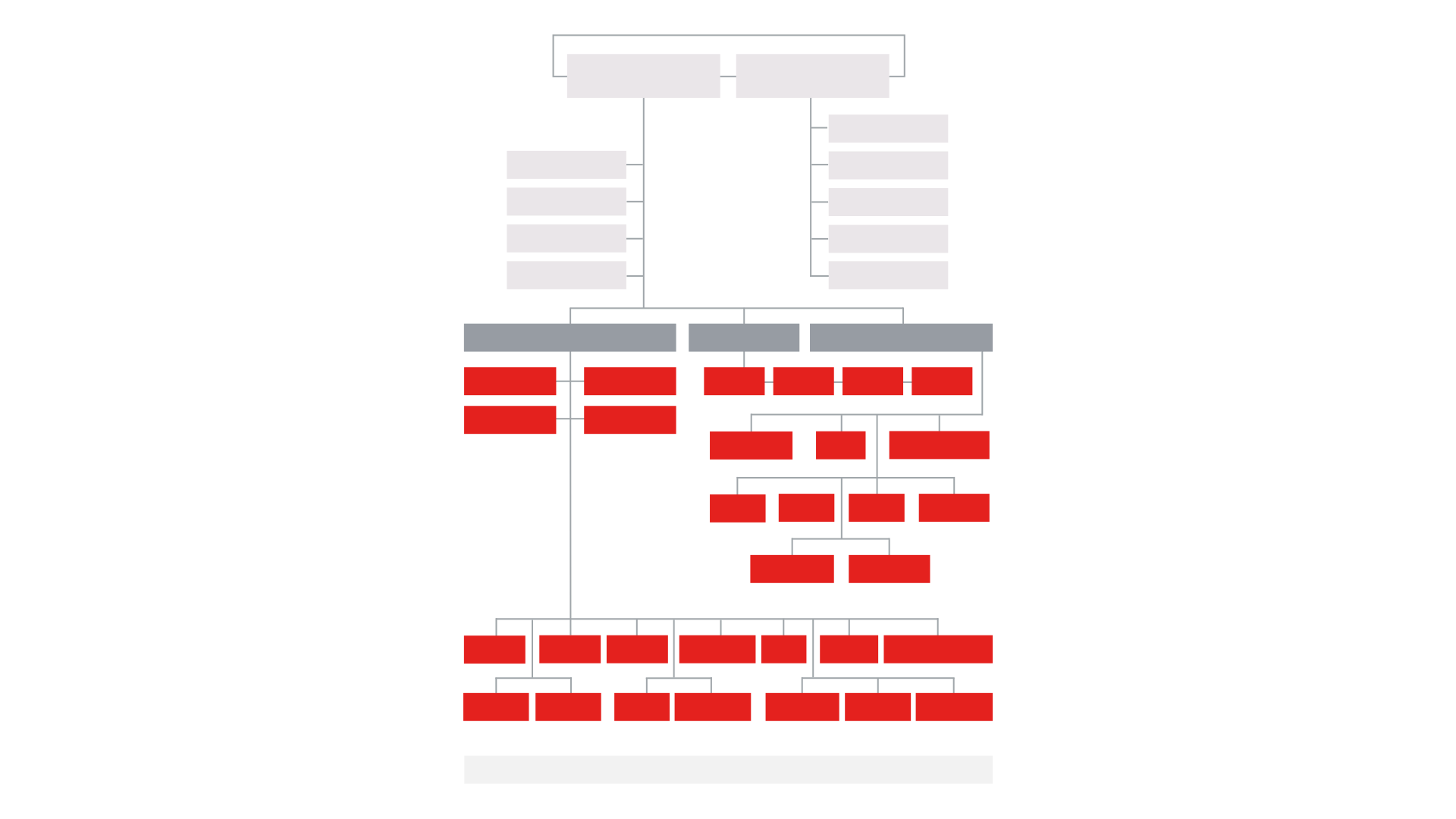Ways to facilitate communication and coordination between departments

When we interact with organisations, we tend to think of them almost as if they were persons with interests, personality traits, and a (possibly broken) moral compass; many cheer for companies, like SpaceX, which are seen as ambitious, and hate on companies like Microsoft and Oracle because .
Of course, organisations are not persons: they consist of many different individuals who collectively try to make a change (and some money) in some way. In most organisations individuals are assigned a role, like social media specialist, customer support agent, sales representative, or managing director. It is these people who often speak on behalf of their organisation.
But anyone who has ever worked somewhere knows that organisations have many more internal roles, processes, and structures that are completely invisible to the outside world. One of the most important structures is the organisational structure.
The organisational structure groups individuals into , defines a hierarchy with formal reporting relationships, and includes processes that allow for effective communication, coordination, and integration of efforts across departments.
This structure can be visualised using an organisational chart, which usually looks like a tree or tree-like matrix diagram. Directors and managers appear near the top (root) of the tree, while those who do the actual work are lumped into teams and departments, which can be found in the leaves of the tree and some intermediate nodes.
The figure below shows the organisation chart for the Dutch Broadcasting Foundation, a public broadcaster in the Netherlands. Even though I have left out the labels in this figure, you can clearly see the tree structure, and how the staff departments (light grey) and line departments (red) are organised in different ways.

The Dutch Broadcasting Foundation’s organisational chart
Organisational charts can be useful if you want to get a high-level overview of what an organisation does or want to understand its vertical linkage, i.e. who reports to whom. This gives you some idea of how a few key individuals within the organisation communicate with their higher-ups and subordinates via rules, plans, reports, and memos.
An organisational chart does not tell you anything about horizontal linkage; how individuals from different departments communicate and coordinate with each other.
There are five common mechanisms that one can use to achieve horizontal linkage:
-
Information systems like SharePoint, Teams, TOPdesk, and Confluence facilitate information exchange about problems, solutions and decisions, and may also help members of the organisation build relationships across departments or divisions.
-
Direct contact between people helps when information cannot be easily conveyed via in written form or when people are located near each other anyway. Direct contact may happen in an ad hoc fashion whenever the need arises, or can be facilitated by creating a special liaison role for someone who communicates and coordinates between two departments.
-
Task forces are committees with representatives from multiple departments, which generally only exist to solve a specific problem and are disbanded once they have completed their task. A task force can be organised to deal with almost anything, from complex engineering problems to end-of-year parties.
-
Sometimes the need for structural coordination between departments is so great that you need full-time integrators, like product managers and project managers. Integrators generally do not report to a department and do not have any formal authority: excellent people skills are all they need to do their job.
-
Project teams are the strongest horizontal linkage mechanism. Unlike task forces, cross-departmental project teams are permanent.
The first two mechanisms are fairly common and usually accessible to everyone in an organisation. The latter two are only needed in specific circumstances. Due to their high costs, they are typically reserved for those in the upper echelons of the organisation.
As an individual contributor you can – and should – make good use of the first three mechanisms (information systems, direct contact, and task forces) to foster communication and coordination within your organisation.


